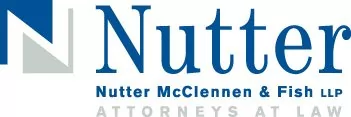A divided panel of the federal appeals court overseeing patent matters has brought back into play draconian rules proposed by the U.S. Patent And Trademark Office (USPTO) in 2007 to deal with its backlog of unexamined applications. The rules had been struck down by a lower federal court on the eve of their effective date – much to the relief of almost everyone outside of the Patent Office. Last week, however, the Court of Appeals for the Federal Circuit (CAFC) concluded that the USPTO had the authority to promulgate several of the controversial rules and remanded the case to the lower court for further consideration. While it is not clear that the new Obama administration has any interest in revisiting this issue, the appellate court decision gives the next Commissioner of Patents authority to impose additional burdens on applicants.
The three judge panel in Tafas v. Doll, concluded on Friday March 20, 2009, that rules proposed in 2007 were "procedural" and, hence, for the most part could be implemented by the USPTO without Congressional approval. The majority opinion, written by Judge Sharon Prost, found that only one of the four new rules was invalid. This particular rule, proposed Rule 78, was perhaps the most controversial, since it would have limited the number of continuing applications that applicants could pursue on an invention. The Court found that the proposed limit on continuation applications was contrary to section 120 of the U.S. Patent Laws, which gives patent applicants the right to claim the priority of their earlier filings without any limit on the number of priority claims applicants can make.
In a concurring opinion, Judge William Bryson went one step further than the majority: he agreed that the rules were procedural but he would have approved the USPTO limits on continuing applications as well – except for initial continuing applications filed during the pendency of the applicant's first filing.
Judge Randall Rader, the third judge on the appeal panel, dissented. He would have affirmed the decision of the Federal District court from Virginia that found all four of the new rules were "substantive" and, therefore, beyond the limited authority of the USPTO.
The four rules were announced together by the USPTO on August 21, 2007. Two of the new rules, Rule 78 and Rule 114, were designed to limit continuation applications and requests for continued examination ("RCEs"). Under Rule 78, an applicant would have been entitled to file two continuation applications as a matter of right. If an applicant wished to pursue more than two continuation applications, a petition would have been required "showing that the amendment, argument, or evidence sought to be entered could not have been submitted during the prosecution of the prior-filed application." Rule 114 provided similar treatment of requests for continued examination. Under this proposed rule, an applicant would have been allowed one RCE as a matter of right.
The two other rules, Rule 75 and Rule 265, were intended to address the USPTO's purported difficulty in examining applications that contain a large number of claims. Rule 75 would have required an applicant who submits either more than five independent claims or twenty-five total claims to provide the examiner with information in an examination support document ("ESD"). Rule 265 elaborated on the requirements for this examination support document: the applicant would have been required to conduct a pre-examination prior art search, provide a list of the most relevant references, identify which limitations are disclosed by each reference, explain how each independent claim is patentable over the references, and show where in the specification each limitation is disclosed – requirements that almost every one of over 300 public comment submissions found objectionable when the rules were initially published.
After the Final Rules were published in the Federal Register, Triantafyllos Tafas, an individual inventor, and GlaxoSmithKline (GSK), the pharmaceutical company, filed suit to enjoin their implementation. Both cases were consolidated for hearing before Judge James Cacheris of the federal court in eastern Virginia. Among other grounds, the plaintiffs asserted that the USPTO lacked the proper legal authority to promulgate substantive (as opposed to procedural) rules. In addition, they claimed that the retroactive nature of many of the rules was contrary to law.
The District Court for Eastern Virginia agreed with Tafas and GSK that the new rules "retroactively alter the bargain on which inventors like GSK rely in making their decision to surrender their rights," thus, setting the stage for last week's appellate court decision.
The CAFC decision reaffirmed that Congress has never granted the USPTO "substantive" rule making authority – but found the rules procedural because they only governed the timing of arguments and materials that must be submitted with patent applications.
Where do we go from here? The appellate panel has remanded the case to the district court to consider remaining issues – like whether the USPTO rules are arbitrary and capricious. There is also a possibility that the Federal Circuit will decide to rehear the case "en banc" with all sixteen judges of the circuit court participating in the final decision. An appeal to the U.S. Supreme court might also be sought by Tafas or the USPTO.
One can only hope the decision will be become a pyrrhic victory for the bureaucrats and that when a new Commissioner of Patents is appointed by the Obama administration the proposed rules will be scrapped once and for all in favor of more rational approaches to reducing the backlog of patent applications.
This update is for information purposes only and should not be construed as legal advice on any specific facts or circumstances. Under the rules of the Supreme Judicial Court of Massachusetts, this material may be considered as advertising.


